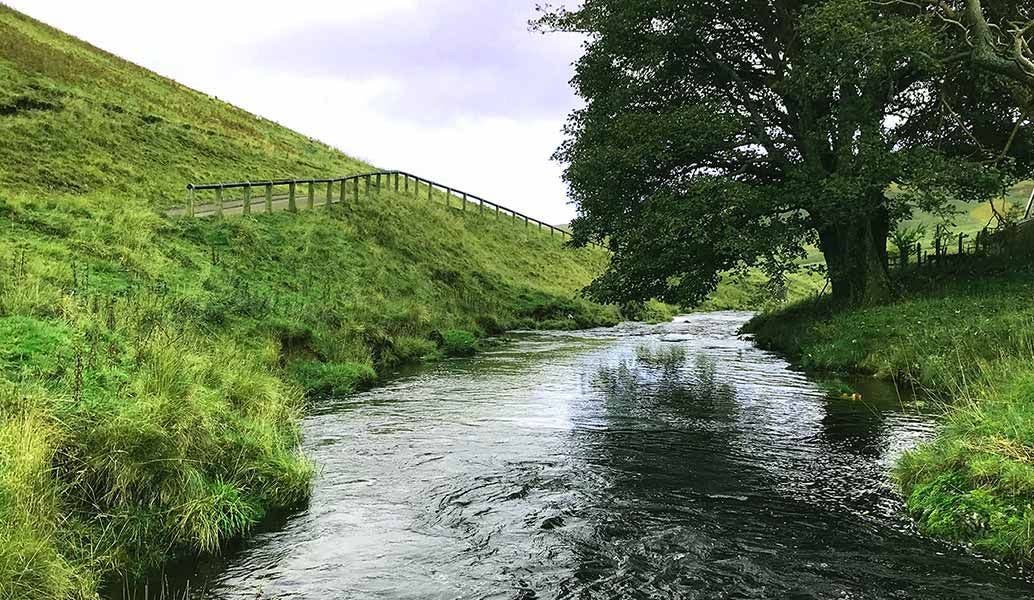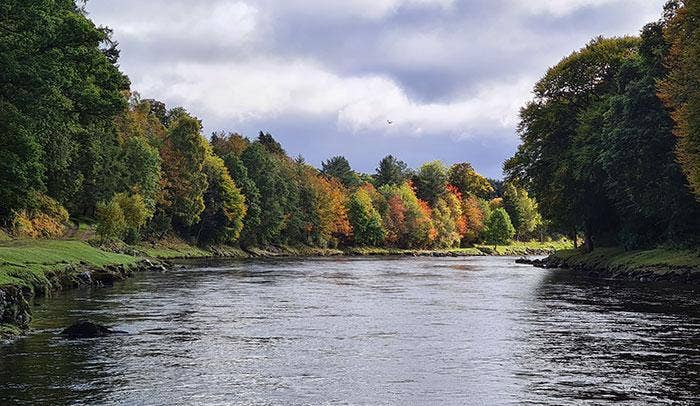Sportfish (and Farlows) have always been strong supporters of the Atlantic Salmon Trust over the years and have helped to not only raise awareness of our work, but also to help raise the all-important funding required to make it all happen.
Most recently this has included the manufacture of a special HRH salmon fly, designed in a contest to celebrate the late Queen’s Platinum Jubilee, and the production of the King’s Coronation Collection Salmon Fly Box, both of which contribute a portion of their salmon fishing tackle sales to the Atlantic Salmon Trust. These sorts of initiatives and support from anglers are essential in the current times where we have witnessed a catastrophic decline in wild Atlantic salmon.
At the time of writing, wild Atlantic salmon in Great Britain have been officially assessed by the International Union for the Conservation of Nature (IUCN) to be an endangered species, which is why we must all now pull together more than ever before.
I was delighted therefore to be offered the chance to write an article for the Sportfish audience, updating them on our where our work is now heading in light of this development.


It’s probably fair to say that we’re best known for our fish-tracking work over recent years and you might be familiar with the Moray Firth Tracking Project and West Coast Tracking Project (the latter a partnership with Fisheries Management Scotland and the Marine Directorate, with support from Glasgow University) – two large-scale acoustic telemetry projects which tracked salmon smolts as they moved down rivers and out into the coastal zone.
After both projects delivered three field study years and tagged over 5,000 salmon smolts across 18 Scottish rivers, our team is now working hard to analyse the millions of data points generated in order to channel that work into better management and regulation, both within our rivers and around our coasts. Readers can read about the preliminary findings from both of those projects via our website atlanticsalmontrust.org.
While that important data analysis work happens behind the scenes, we’re moving ahead and putting science into action on a greater scale than ever before, matching the urgency of the crisis that salmon face. It’s no longer about conservation, but the restoration of the species.
Before I explain how that works, here's what salmon are up against…
- Across their North Atlantic range, we have lost around 70% of our wild Atlantic salmon in the last few decades.
- The IUCN assessment of British salmon as an endangered species, is based on a 30-50% decline in the population since 2006, and a projected further decline of 50-80% from 2010-2025.
This alarming decline has been driven by a range of factors, but ranking highly among these has been a significant reduction in marine survival. Simply put, fewer adult fish are making it back to their home rivers. In past decades, for every 100 young salmon ‘smolts’ (juvenile fish on their way out to sea) which left our rivers, we might have expected 10-20 of these to come back as adults, sustaining large runs of fish entering our rivers. Now that number could be as low as 2-3.
The exact reasons for this are not yet fully understood, but it is thought that climate-driven changes to ocean currents and feeding availability could be to blame. There are also pressures in our coastal zones having an impact, such as aquaculture and other marine developments, and perhaps an important fisheries bycatch element which is not yet clear. We’re gearing our future research projects to fill these important knowledge gaps about what is happening to our salmon at sea, but right now we’re turning our attention to our freshwater catchments…
So why is that? If the issue is at sea, why such a focus in freshwater?
What we do know is this: the larger and healthier a smolt is when it leaves its home river, the better its chance of completing its ocean journey, perhaps even by 2-3 times when compared to a smaller, less fit smolt.
So how do we make a bigger, healthier smolt? The simple ingredients required are cold, clean water, and in many cases in Great Britain our young fish are not getting this. We need to restore habitats in our freshwater to reduce thermal stress (we all know that water temperatures are rising in our rivers). This means restoring woodland to provide dappled shade on our rivers, especially in important spawning tributaries.
This will also bring added benefits in terms of cover from predators (particularly when woody debris falls into river channels), and habitat for invertebrates – juvenile salmon food. We also need effective buffer strips along our rivers to protect against agricultural runoff, the removal of barriers to migration to maximise in-river spawning, habitat and feeding potential, and we need to control the flow of water as it enters our rivers to protect against damaging winter spates and redd washout – this can be achieved again by riparian woodland restoration, as well as restoring wetland and peatland habitats.
All of this habitat work is now incredibly urgent if we are to give our juvenile salmon the best start in life that we possibly can. If we can get more young salmon to sea in a fit and healthy condition, more will come home.
Our new Core Rivers programme is the next move forwards into this arena, building on our many years of research. These rivers will put science into action on the ground, putting restoration solutions in place on a vast, landscape-scale and, importantly, measure the success of those solutions on the fish population.


Currently these Core Rivers are Project Laxford (a partnership with Grosvenor’s Reay Forest Estate in northwest Sutherland), and Project Deveron in partnership with the Deveron, Bogie & Isla Rivers Charitable Trust. These long-term habitat restoration projects will employ a range of the measures mentioned above, and are using highly sophisticated monitoring techniques to prove their effectiveness.
This includes PIT (Passive Integrated Transponder) tagging of salmon parr (akin to the microchip in your pet dog) to look at the response of the fish population over time to our restoration actions, as well as cutting-edge sonar imaging fish counters which will aim to log the number of returning adult fish each year. We’ll also be using environmental DNA analysis techniques to measure changes in the wider biodiversity of the catchment in response to our work. Readers can find out more about these two Core Rivers projects by visiting our website.


Salmon are up against it – we are now dealing with an endangered species. It’s vital that we act to restore their environment at scale, and at pace, if we are to secure their future. This means working across entire river catchments to restore biodiversity, provide climate resilience, and deliver cold clean water. We hope that Project Laxford and Project Deveron will be exemplars of this catchment-scale approach from which others can learn and follow, and I look forward to keeping the Sportfish team and their customers updated with our progress.
We can’t do it without you
Without our supporters, we can’t continue on our mission to put science into action and #WildSalmonFirst. Visit the donations page on the The Atlantic Salmon Trust website to find out how you can support us.
© Hero image credit, Chris Conroy





